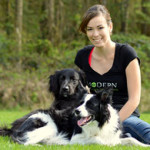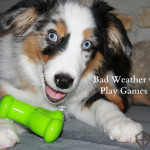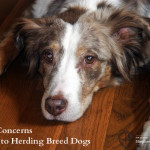What to Expect When Adopting a Herding Breed Dog: Part 2
Bringing Home a Rescue, Part 2
Now that you have the dog – where to start
Do You Know What to Do After Adopting a Herding Breed?
So you’ve decided to rescue a herding breed…Congratulations, you are a Saint! I truly mean this from the bottom of my heart. Herding breeds are one of the most difficult dogs to have and maintain, and many new owners lose their minds when bringing one home because they completely underestimated the challenge they can be. So the fact that you have opted to go beyond the cute puppy face (which no one can resist) and bring home an older dog, most likely having some issues, you are truly a kindhearted person, and this article is dedicated to ALL who have opened their hearts and doors to these dogs.
If you missed Part 1, View it Here!
Below I will outline a few main problems you may encounter when bringing home your herding rescue, and tips on how you can help them become more acquainted into your home.
BONDING
This is surprisingly overlooked by many, however, it should be top priority as soon as you bring home the dog.
Bonding between human and dog doesn’t always just “happen” right away, especially for the dog; it takes time and trust to build a trusting relationship where the dog truly sees you as his family and WANTS to stay with you.
Bonding is basically done through one-on-one time, whether that be cuddling, playing, training or walking; it’s spending that time with the dog and showing them you care, and in turn, dogs will do the same back. Now, because (I’m assuming) the dog you’re bringing home will not be a puppy, it will take a little longer to bond with him. Here are some tips to speed up the process and avoid pitfalls:
- Go for lots of walks – don’t focus right off the bat on training a perfect walk, JUST WALK with the dog. This initial time is catered to the new dog. We can bring in structure to walks later, just give the dog a break right now and let him have some safe enjoyment.
- Buy a long leash and give that dog some freedom on a safe field or in your yard. No new dog should be trusted to be off leash, especially herding breeds that have instincts to chase - if they see something before you can catch them, they’d be gone, so play it safe and invest in a $30 long line and give the dog some freedom.
- Play recall games (use long lines if you’re outside)
- Training – sit down each night and train the dog with treats or toys (whichever they prefer), teach them silly, stupid tricks or lovely obedience cues, it doesn’t matter as long as both are having fun!
- Playing – this can be tricky. Some dogs are stressed when you bring them to their new home and aren’t that “playful” off the get-go. It’s okay if they’re not, don’t worry, it can come out eventually either naturally or you may have to work up their play drive. Playing, if you can, introduces Oxytocin which is a strong “happy drug” that can help bond both dog and owner.
- Here are 5 Indoor Activities that you can play with your dog, written by Evangelist Rachel Shepherd.
- Rewarding – throughout the day, when the dog is just being a dog (walking around, sniffing things etc), reward the dog with high praise and treats! If the new owner is happy all the time and treats rain from the sky for no reason, this dog will not want to leave! This is more about de-stressing the dog and creating positive association.
SEPARATION
Most rescues will have some issues dealing with separation at the beginning, and for the right reasons - they just left their comfortable home/territory and were brought to a whole new environment with different scents, sights and noises, so this can be extremely overwhelming for more sensitive herding breeds. This creates stress, which is the lighter fluid for anxiety, and something you need to be very understanding about.
- Take 1-2 weeks off from your job when you’re planning on bringing a dog into your home. Spend that time transitioning the dog into your environment and training separation slowly. Build the dogs comforts up so he or she feels safe in that home.
Training separation:
-
- Small steps - taking out the garbage 20 times, going out the door for two seconds and coming back, and just slowly increasing the duration that you’re gone, so the dog doesn’t panic as soon as you’re out of sight.
- Tire the dog out physically and mentally before trying to leave for more than five minutes.
- Provide highly stimulating enrichment toys so the dog can be preoccupied while you leave (this is usually the trigger for separation).
- Video tape what happens when you leave (start with 5 minutes), watch the video; does the dog panic, pace, etc.?
- Don’t crate the dog unless he or she is already crate trained. Introducing crating to a herding breed, if they have never been crated, can spell disastrous outcomes such as increased anxiety, frustration, destruction, urinating/defecating, howling, barking, and/or injuries.
- Think ahead - if the dog is going to take more than two weeks to get accustomed to you leaving, do you have a place where you can bring the dog until you can complete training? How about a friend that can watch the dog?
EXTRA TIPS
ROUTINE
Providing a routine is important for all dogs, but for a new dog, this will take some getting used to. This is where those 1-2 weeks of time off will really have their benefit and pay off. Remember to keep your routine pretty simple, complementing the ups with the downs.
BODY LANGUAGE
Please do not start cuddling the dog right off the bat; you don’t know if the dog has never even been cuddled or handled before. If you do this right off the bat, you may get bit, growled at or scratched from the dog trying to get away, and if this happens, you cannot blame the dog because he doesn’t know you and you tried to maul him (according to him).
Watch my video’s on Canine Body Language to better understand the signs to look for
Give the dog space and make sure to let everyone in the family know to give the dog space for the first month or so. We all want to touch dogs and cuddle them and love them, but we need to respect that they may not like it. If we know, or find out they don’t like being handled, we can work with them on this and get them accustom to being touched and cuddled through counter conditioning exercises as shown here in this video.
Above all, enjoy the dog and spend lots of one-on-one time with each family member and the dog. If we start out on the right paw, the relationship will grow to be amazing.
Article By:
Rachel Sheppard
Meet Our Evangelist








